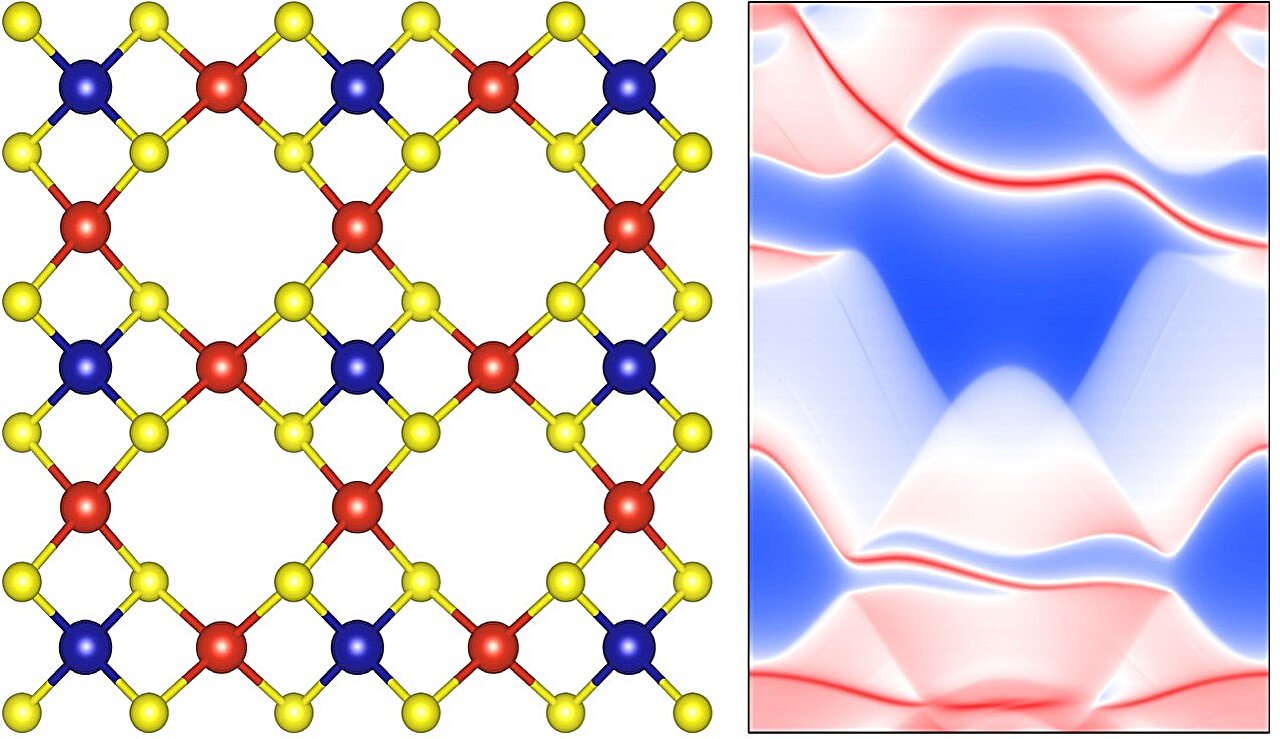
In recent years, physicists and material scientists have identified various new materials marked by interesting properties and quantum effects. These materials could prove highly valuable both as platforms to study quantum effects and for the development of new quantum computing devices.
One class of materials that has attracted particular attention is quantum anomalous Hall insulators. These materials have interesting properties that allow them to conduct electricity in highly controlled and efficient ways, leveraging quantum mechanical effects and magnetism.
Researchers at Fudan University in China have recently been trying to identify new promising quantum anomalous Hall insulators. Their latest paper, published in Physical Review Letters, outlines the unique characteristics of monolayer V2MX4, which could belong to a new family of quantum anomalous Hall insulators.
“Finding intrinsic quantum anomalous Hall materials is an important goal in topological material research,” Jing Wang, co-author of the paper, told Phys.org. “After we predicted MnBi2Te4, a paradigm example of magnetic topological insulator and exhibiting quantum anomalous Hall effect in odd layer, we have been thinking about finding new intrinsic quantum anomalous Hall insulator with large gap.”
Large-gap quantum anomalous Hall insulator materials exhibit a quantum anomalous Hall effect with a relatively large energy gap between the valence and conduction band. These materials should exhibit a synergy between two seemingly conflicting properties, namely spin-orbit coupling and ferromagnetism.
“The key is rooted in the d-orbitals, in which both the topology and magnetism coexist,” Wang said. “In our previous works, we initially presented ATiX, a class of quantum anomalous Hall materials characterized by the P4/nmm space group,” Wang said. “The symmetry analysis in P4/nmm ultimately led us to identifying V2MX4 materials under the P-42m space group.”
V2MX4, the new family of materials identified by Wang and his collaborators could be synthesized using processes that have been widely employed to synthesize compounds with similar structures, such as Cu2MX4 and Ag2MX4. This new family of materials includes a total of 10 materials with nontrivial topological band gaps and similar properties, six of which have been theoretically proven to exhibit both dynamical and thermodynamical stability.
“The abundance of candidates underscores the universality of this structure, enhancing the prospects for synthesis,” Wang explained. “In terms of performance, we think that a fitting description of V2MX4 family is ‘simple yet powerful.’ The straightforward Hund’s rule delivers high Curie temperatures (ranging from 200 to 500 K). The band inversion at the Gamma point yields a large nontrivial topological band gap (ranging from 100 to 300 meV).”
The numerical calculations and simulations performed by Wang and his colleagues suggest that V2MX4 materials have rich topological properties. They are quantum anomalous Hall insulators in their odd layer, axion insulators in their 7 layer, antiferromagnetic topological insulators in their 3D ground state, and 3D quantum anomalous Hall insulators in their ferromagnetic state of 3D.
The researchers have now started collaborating with a team of experimental physicists to synthesize V2MX4 in laboratory settings. Their work could pave the way toward identifying other promising quantum anomalous Hall insulators, which could have interesting implications for quantum physics research and quantum technology development.
“V2MX4 stands out as one of the most competitive candidates for high-temperature quantum anomalous Hall insulator with large gaps,” Wang added. “If realized experimentally, could greatly promote the research and application of topological quantum physics. An important goal for our next research will be to find new intrinsic topological insulator materials, and we concurrently collaborating with experimental groups to fabricate V2MX4.” https://phys.org/news/2024-04-unveils-family-quantum-anomalous/-hall.html








Recent Comments